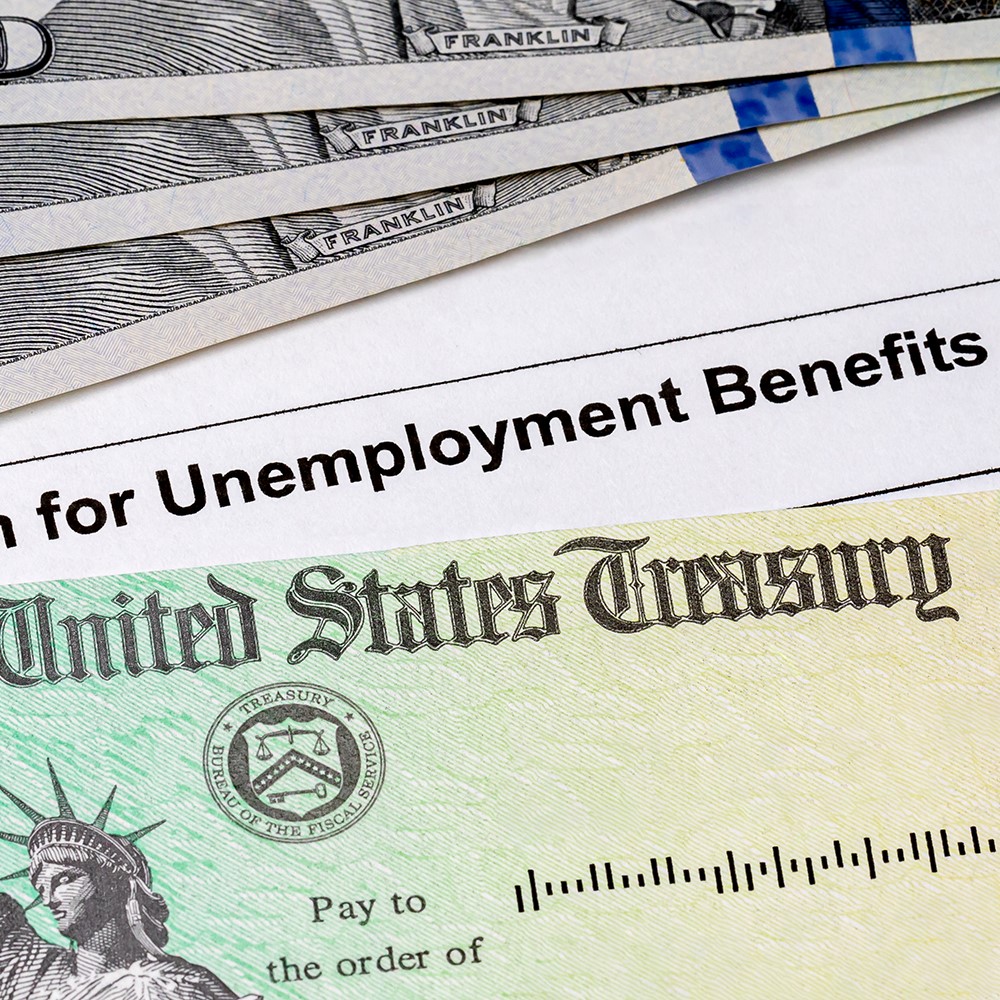Worsens California’s Uncompetitive Business Environment
UI benefits are not designed for workers who have voluntarily walked off the job – it is part of the social safety net system designed to help those workers who have become unemployed through no fault of their own. Expanding these benefits to workers who voluntarily walked off the job likely violates federal law and creates additional pressures that jeopardize the program’s financial stability. This concern is heightened today because California’s state trust fund is in debt owing more than $20.5 billion to the federal unemployment insurance trust fund.[1]
Additionally, California’s workers already earn competitive salaries that are among the nation’s highest. According to the Bureau of Labor Statistics (BLS), California’s average annual wage ($76,960) is the fourth highest in the nation.[2] Even California’s lower-income workers – those in the bottom 25 percent of income earners – earn the 7th highest average annual wage compared to lower-income workers in all other states. Consequently, it is unclear why the radical change to the UI program is necessary.
While the benefits are unclear at best, state residents will bear high costs if this bill is passed. California is already one of the costliest states in the nation for doing business. According to the Kosmont-Rose Institute Cost of Doing Business Survey, out of 158 western cities “18 of the 21 highest cost cities are in California. Indeed, among the 50 highest cost cities, California claims 43 spots.”[3] These cost disadvantages explain why the decades long businesses exodus from the state has been accelerating in recent years.[4]
The necessary UI tax rate increases to fund the proposed expansion of unemployment insurance benefits to striking workers will worsen this already uncompetitive environment. SB 1116 would directly raise costs by imposing higher unemployment insurance taxes on businesses to fund the expanded benefits. While the precise tax rate increase is unknown, because the increased payouts to potentially striking workers are unknown, directionally it is clear that the tax burden on California’s businesses will rise if this proposed bill were implemented.
Facing additional potential costs, employers that choose to remain in the state will be disincentivized from hiring workers – a larger California-based labor force exposes the businesses to larger potential costs. For other businesses, the potential costs will encourage them to follow the growing migration out of California. Either way, the higher taxes and increased business risks imposed by this legislation will diminish incomes, reduce job growth, and cost the state potential tax revenues due to the reduced economic activity.
Encourages More Costly Strikes
The reduced costs that workers would bear from striking will also encourage businesses to acquiesce to more worker demands in the hopes of avoiding a now more burdensome strike (presumably the proposal’s intention). The expected cost structure for California’s businesses will rise relative to businesses in all other states, consequently. These higher costs will diminish the growth potential of California-based businesses, sapping overall economic growth of the state.
In those instances where a strike is not avoided, the policy to pay striking workers unemployment insurance benefits will encourage longer and more economically damaging strikes since businesses are now subsidizing the incomes of the striking workers. The economic costs from recent prolonged strikes demonstrate the large economic burden California’s economy will bear from each additional strike the legislation incentivizes.
The United Auto Workers (UAW) strike in the Autumn of 2023, for instance, cost the national economy $10.4 billion.[5] These costs included $650 million in lost wages for striking workers, $3.3 billion in lost wages and earnings to supplier companies and workers, $4.3 billion in losses revenues for the three impacted automakers, and $2.0 billion in lost earnings to dealers and their workers/suppliers.
The 2003-04 strike against three Los Angeles grocery stores associated with national grocery chains inflicted $1.5 billion in costs to the retailers, with an additional three quarters of a billion dollars in additional lost spending that harmed the broader community due to this reduced economic activity.[6] More recently, the 2023 strike of actors and writers is estimated to have cost California more than $6 billion in lost wages and business income.[7] Just like the grocery store strikes, a large portion of these costs were borne by small businesses and workers not affiliated with the movies studios but who were unlucky enough to be harmed anyway.
Whether the total economic costs from each additional strike is $2 billion or $10 billion depends on which unions will go on strike and for how long. What is certain is that these costs are large and will also harm families that have little or no connection to the striking workers.
Conclusion
Among the many anti-growth legislative proposals being considered in Sacramento this year, SB 1116 stands out as a particularly large threat to prosperity. If adopted, expanding unemployment insurance benefits to striking workers will slow job creation, accelerate the exodus of businesses from the state, and diminish incomes. It is a costly and economically destructive policy that warrants no further consideration.
[1] United States Department of Labor, https://oui.doleta.gov/unemploy/budget.asp.
[2] “Occupational Employment and Wage Statistics” U.S. Bureau of Labor Statistics, https://www.bls.gov/oes/data.htm, accessed April 12, 2024.
[3] “Kosmont-Rose Institute 2022 Cost of Doing Business Survey” Rose Institute of State and Local Government, Claremont McKenna College, December 2022, https://s10294.pcdn.co/wp-content/uploads/2023/01/KRCODBS_FULL_FINAL.pdf.
[4] “Kosmont-Rose Institute 2022 Cost of Doing Business Survey” Rose Institute of State and Local Government, Claremont McKenna College, December 2022, https://s10294.pcdn.co/wp-content/uploads/2023/01/KRCODBS_FULL_FINAL.pdf.
[5] Powers Sara “Economic losses reach $10.4 billion in sixth week of UAW strike” CBS Detroit, November 2, 2023, https://www.cbsnews.com/detroit/news/economic-losses-reach-10-4-billion-in-sixth-week-of-uaw-strike/.
[6] Peltz JF and Mensik H “Grocery strike rocked Southern California 16 years ago. It may happen again soon” Los Angeles Times, June 22, 2019, https://www.latimes.com/business/la-fi-ralphs-vons-albertsons-strike-vote-20190622-story.html; and Jaco E “Analysis: Costs to stores, clerks of grocery strike revealed” San Diego Union Tribune, December 7, 2003, https://www.sandiegouniontribune.com/sdut-analysis-costs-to-stores-clerks-of-grocery-strike-2003dec07-story.html.
[7] Chmielewski D, Broadway D and Richwine L “Hollywood strikes sap economy as industry readies for revamp” Reuters, November 15, 2023 https://www.reuters.com/business/media-telecom/hollywood-strikes-sap-economy-industry-readies-revamp-2023-11-15/.

